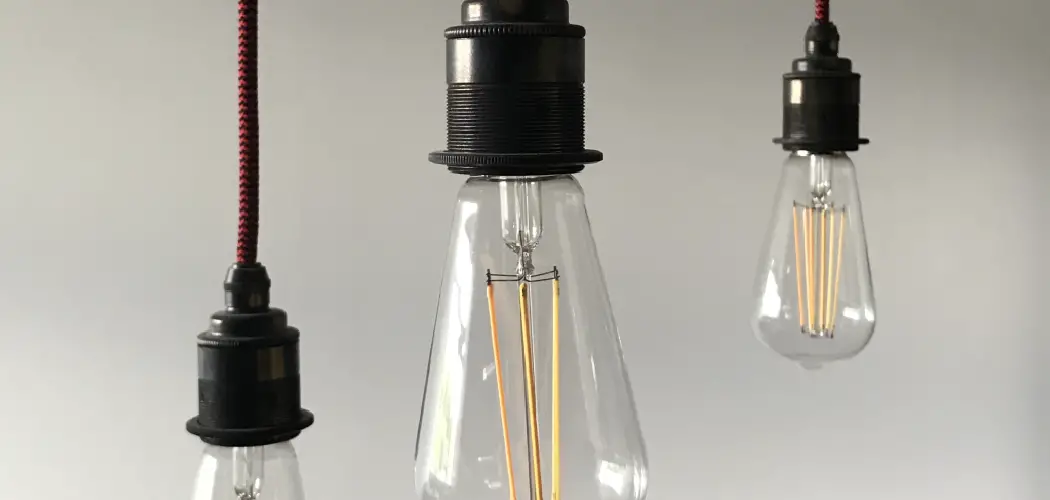Light bulbs are an essential item in our daily lives, but hundreds of varieties are available. Despite their importance, few people give much thought to the base size of their light bulbs. It may seem like a minor detail, but selecting the right base size is crucial for ensuring your light bulbs fit properly and function correctly.
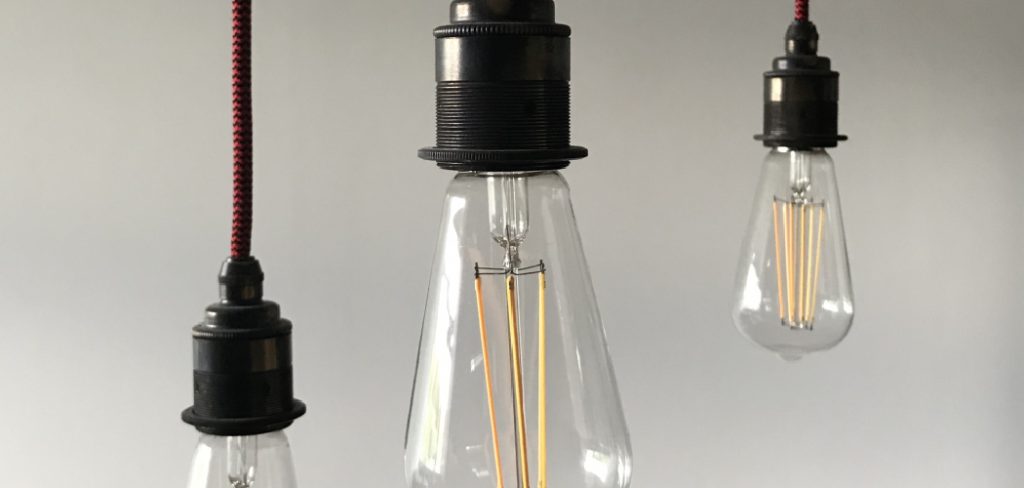
This blog post will provide you with an in-depth guide on how to find light bulb base size for your needs.
Can You Find a Light Bulb Base Size?
Light bulbs are an essential item in every household. With advances in technology, many options have been available in the market. However, have you ever been in a situation where you needed to replace a light bulb but didn’t know the base size? It can be frustrating and time-consuming to try and figure out what base size your light fixture requires.
The good news is that finding a light bulb base size is easier than you might think. You can start by checking the packaging of the old bulb or the fixture itself. Alternatively, you can measure the diameter of the base and use an online guide to determine the correct size. With a little effort, you can easily find the right base size and brighten your lights.
Why Should You Find a Light Bulb Base Size?
Whether you’re looking to replace a burnt-out light bulb or simply upgrade the lighting in your home, finding the right light bulb base size is essential. Not only will selecting the proper base size ensure that you have a working light source, but it will also help expand your options when it comes to finding the perfect bulb for your needs.
After all, the vast array of lighting fixtures on the market today can accommodate a variety of bulb sizes and types, and finding the best fit for your space can mean the difference between a well-lit and welcoming home or a dim and dreary space. So, why should you find a light bulb base size?
The answer is simple: it can make a world of difference in the look and feel of your home and give you peace of mind knowing that you have chosen the right bulb for the job.
7 Tips to Follow on How to Find Light Bulb Base Size
1. Identifying the Different Types of Light Bulb Bases
Firstly, it’s crucial to identify the various types of light bulb bases and to understand their differences. The two most common types of bases used in modern light bulbs are screw bases and pin bases. Screw bases are identified by the shape of the base itself, which is shaped like a helix or a screw. The most common screw base sizes include E12 (small), E26 (medium), and E39 (large).

On the other hand, pin bases are a little more complicated. They can have a single or double pin, and the pin spacing also varies. The most commonly used pin bases include G4, G9, and GU10.
2. Measuring the Bulb Base
Another crucial step in finding the perfect light bulb base size is measuring the existing bulb base or the socket. You can measure the base’s width and depth with a ruler or a measuring tape. Some socket sizes are standardized, so you may want to look up the exact specifications for a particular size.
3. Consulting the Light Bulb Guide
If you’re unsure what size light bulb base you need, plenty of online resources can provide you with a comprehensive guide. Many of these guides are searchable by light bulb brand, wattage, and base type. You may also find that some light bulb packages come with a reference chart of recommended base sizes.
4. Checking the Wattage
Another important factor to consider is the wattage of the light bulb. A bulb with the wrong base size may not be able to support the wattage of the bulb you require. Be sure to check the manufacturer’s recommendations and specifications before you purchase a light bulb.
5. Seek Professional Assistance
If you’ve gone through all these steps and still can’t find the right size base for your light bulb, it’s best to seek professional assistance. An experienced electrician can help you identify the correct base size or even replace the socket altogether if required. Seeking professional help can prevent any serious electrical problems in the future, ensuring your safety.
6. Knowing the Voltage Rating
It’s also important to be aware of the voltage rating of your light bulb in order to find the right base size. Not all bulbs will work with a certain voltage, so it’s essential to double-check that you’re purchasing the correct type for your home or workplace.
7. Reading Reviews
Finally, reading reviews from other customers can be a great way to narrow down your options and find the right size for your light bulb. Reviews are especially helpful when you’re unsure about compatibility between different brands and base sizes. Don’t forget to factor in the wattage rating mentioned in the reviews as well.
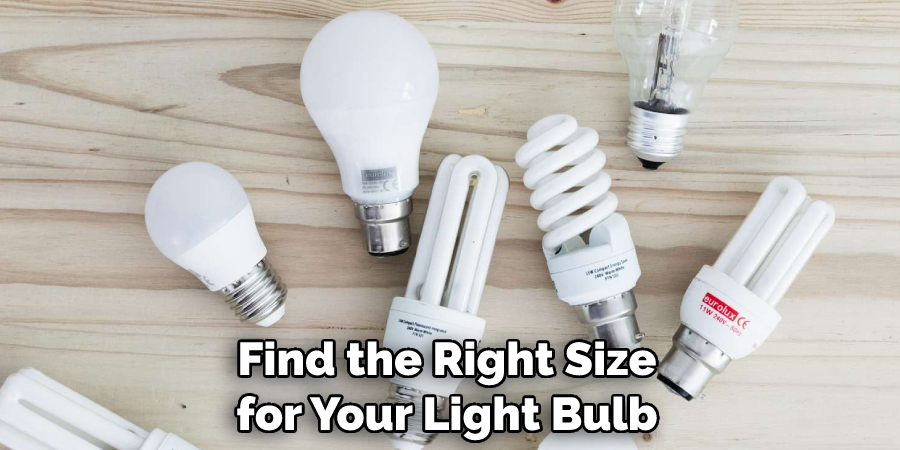
That’s it! You’ve now learned how to find light bulb base size. All that’s left is to find a bulb with this exact base size, and you’re good to go! Take your time and make sure that all of the factors mentioned above are considered to get the best possible result.
5 Considerations Things When You Need to Find Light Bulb Base Size
1. The Type of Light Bulb
The first thing you need to consider when finding the right light bulb base size is the type of light bulb you need. There are a variety of different types of light bulbs, including incandescent, fluorescent, and LED. Each type of light bulb has a different base size, so it’s important to know which type you need before beginning your search.
2. The Wattage
The wattage is another important consideration when finding the right light bulb base size. The wattage is a measure of the amount of energy the light bulb uses. A higher wattage means that the light bulb uses more energy, which can be more expensive to operate. However, a higher wattage also means the light bulb is brighter, so finding the right balance for your needs is important.
3. The Lumens
The lumens is a measure of the brightness of a light bulb. A higher lumen rating means that the light bulb is brighter. If you’re looking for a bright light bulb, you’ll want to choose one with a high lumen rating. However, if you don’t need a very bright light bulb, you can save money by choosing one with a lower lumen rating.
4. The Color Temperature
The color temperature is another important consideration when choosing a light bulb. The color temperature is measured in Kelvin, and it describes how warm or cool the light emitted by the light bulb appears. A lower Kelvin rating means that the light appears warmer, while a higher Kelvin rating means that the light appears cooler.
5. The Shape
The shape of the lightbulb is also something to consider when finding the right base size. Light bulbs come in a variety of shapes, including globe, tubular, and candelabra. Each type of lightbulb has a different base size, so it’s important to know which shape you need before beginning your search.
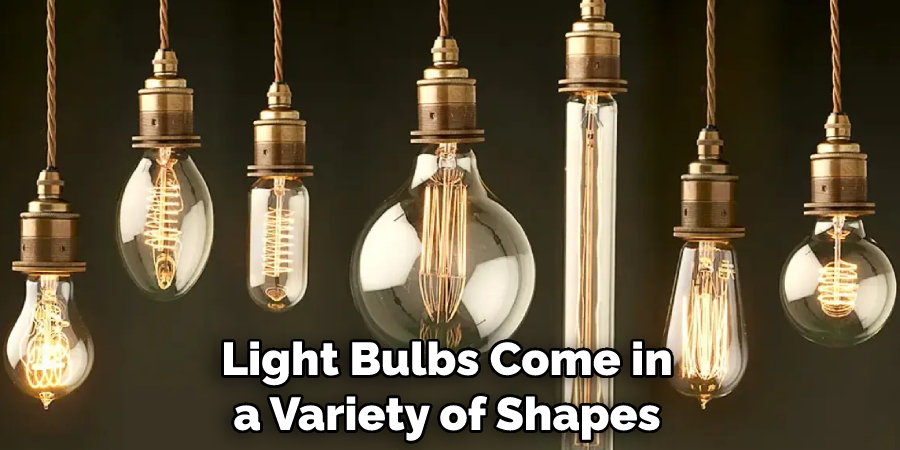
By considering all of these considerations, you can easily find the right light bulb base size for your needs.
Whether you’re looking for a bright, energy-efficient LED or a classic incandescent bulb, understanding the different factors that go into choosing a light bulb will help you make an informed decision. With these tips in mind, you’ll be able to find the perfect light bulb base size for your needs.
Benefits of Find Light Bulb Base Size
Are you tired of constantly buying the wrong light bulbs for your fixtures? Knowing your light bulb’s base size will save you the hassle and expense of constantly returning improperly sized bulbs. Not to mention, using the correct base size will prevent accidents and fires caused by mismatched bulbs.
Understanding base sizes can also help you find the perfect bulb for your desired lighting effect. From traditional screw-in bases to pin-based bulbs, a properly-sized base can mean the difference between a beautiful glow and an annoying flicker. So, take the time to find your light bulb base size and start enjoying the benefits of properly lighting your home or workspace.
Some Common Mistakes People Make When Trying to Find Light Bulb Base Size
Finding the right light bulb base size can be frustrating and time-consuming; unfortunately, many people make common mistakes during the process. One of the most common mistakes is assuming all light bulbs are the same size and interchangeable, which is not always true.
Additionally, improperly measuring the light bulb base or not considering the bulb’s shape and orientation can lead to further confusion. Another mistake is overlooking the right wattage and voltage requirements, which can result in a bulb that does not work or causes damage to the fixture.
By taking the time to ensure proper measurements and paying attention to the details, you can avoid these common mistakes and find the perfect light bulb for your needs.
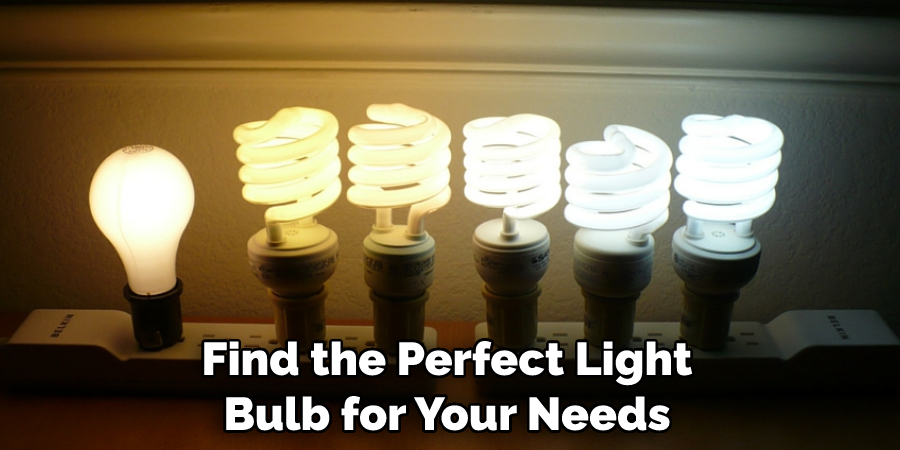
Conclusion
Selecting the right size light bulb base may seem like a minor detail, but it’s crucial for ensuring your bulbs fit properly and function correctly. Always take the time to identify the different types of bases, measure the existing base or socket, consult light bulb guides, and check the wattage.
If all else fails, seek professional assistance to avoid electrical problems and ensure your safety. By following these simple steps, you can shed some light on the perfect light bulb base size for your needs. Thanks for reading our post about how to find light bulb base size.

